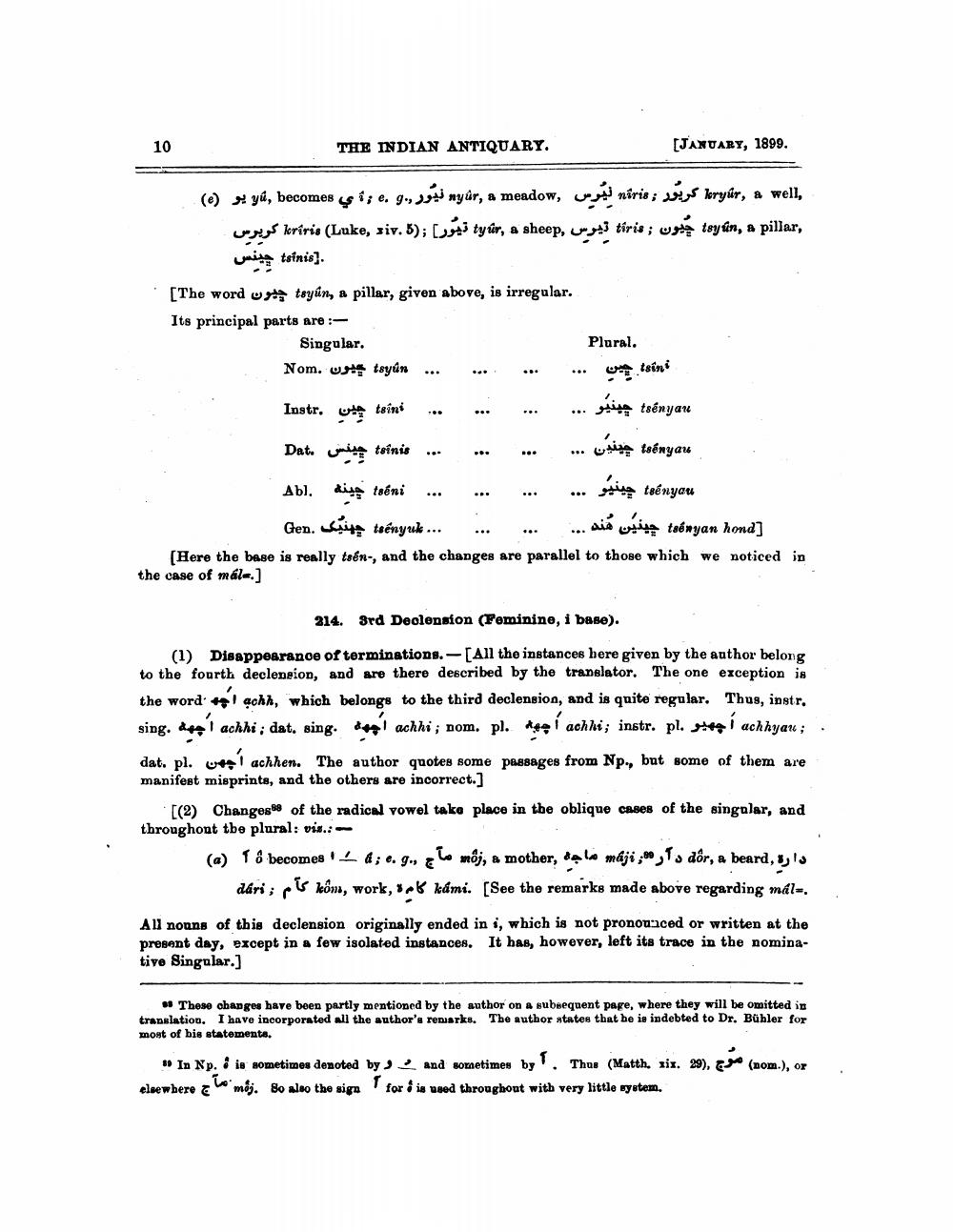________________
10
THE INDIAN ANTIQUARY.
uming tofnis].
,yar, a well کریور fris ليرس ,ny ar, a meadow نور . . : ي ya, becomes ہو (0) ,teyan, a pillar چیون : tiris تیرس ,tyar, a sheep تور ; (5 .kriris (Luke, siv كريرس
teyun, a pillar, given above, is irregular.
[The word u
Its principal parts are:
Singular.
tsyan چیون .Nom
tsini چین .Instr
tsinis چین .Dat
Abl. di teeni
...
... teenyuke چینی .Gen
...
Plural.
...
[JANUARY, 1899.
tsini
19 In Np. is sometimes denoted by
elsewhere
maj. So also the sign for
چین
try چنبر tanga چینی
tanpos چینی
layan hond چینیی مند.
[Here the base is really tsen-, and the changes are parallel to those which we noticed in the case of mál-.]
214. 3rd Declension (Feminine, i base).
(1) Disappearance of terminations.-[All the instances here given by the author belong to the fourth declension, and are there described by the translator. The one exception is the word achh, which belongs to the third declension, and is quite regular. Thus, instr.
sing. dachhi; dat. sing.
achhi; nom. pl.
achhi; instr. pl. sí achhyau ;
dat. pl. achhen. The author quotes some passages from Np., but some of them are manifest misprints, and the others are incorrect.]
[(2) Changes of the radical vowel take place in the oblique cases of the singular, and throughout the plural: vis.:
(a) 1 ô becomes á; e. g., o môj, a mother, ale máji ; dôr, a beard, l dári; kôm, work, kami. [See the remarks made above regarding mál=.
All nouns of this declension originally ended in i, which is not pronounced or written at the present day, except in a few isolated instances. It has, however, left its trace in the nominative Singular.]
* These changes have been partly mentioned by the author on a subsequent page, where they will be omitted in translation. I have incorporated all the author's remarks. The author states that he is indebted to Dr. Bühler for most of his statements.
and sometimes by 1. Thus (Matth. xix. 29), (nom.), or
is used throughout with very little system.




